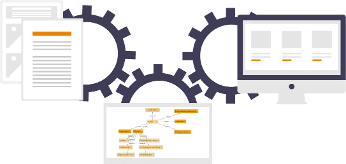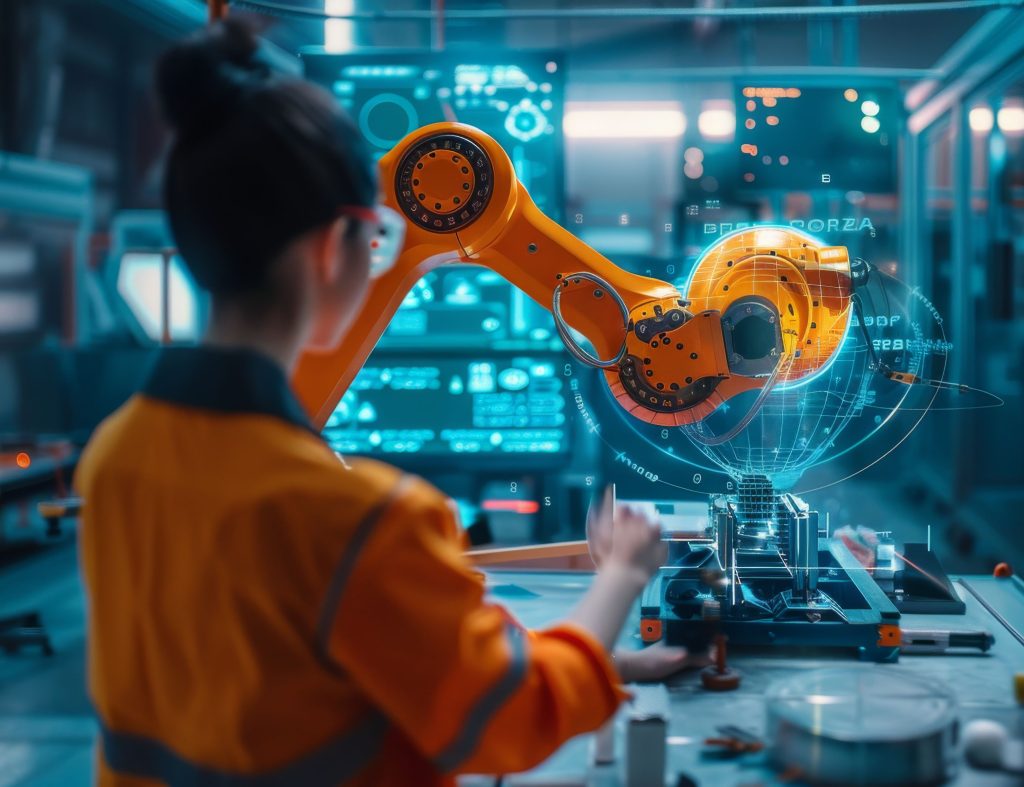The introduction of new technologies has enabled process automation to further develop beyond ‘screen scraping’ and data sorting. It has given rise to a new, smarter, and more powerful type of process automation: Intelligent Automation (IA). IA is the automation of operational processes by using intelligent technologies such as Robotic Process Automation (RPA) and Artificial Intelligence (AI). Many organizations use it today to automate more complex processes. It frees up the time of knowledge workers to be deployed on tasks that generate more value. Naturally, these developments have created a wave of new terminology. Today we will discuss the difference between process-driven, data-driven, and model-driven automation.
Process-Driven Automation: Doing
Process-driven automation is simply driven by processes. Within this category of IA, the focus is mainly on performing tasks, via predetermined pathways and processes. It is not possible to deviate from this predetermined pathway as the process is the leading factor in this form of automation. When a task falls outside the predetermined pathway as an exception, a human must intervene and take over.
The most basic level of IA is Robotic Desktop Automation. At this stage, we can automate basic tasks, often within one system and one data silo. This automation acts as a virtual assistant to human workers, automatically sending emails or generating reports, for example. When advancing to a more sophisticated level of IA, we reach Robotic Process Automation (RPA). RPA excels at automating slightly complex processes, sometimes across multiple systems. However, both levels are limited to automating repetitive and mundane tasks: doing the same thing repeatedly.
Process-Driven Automation is a great first step in digital development and transformation. Organizations can manage it easily and implement it quickly, allowing them to start automating processes within weeks or months. Furthermore, this approach results in immediate efficiency gains, cost savings, time savings, and accuracy improvements. Process-Driven Automation is exceptionally useful for automating the ‘low hanging fruit,’ such as managing financial resources, streamlining customer services, and delivering physical products.[1]
| Process-Driven Automation | |
| Degree of complexity | Low to medium complexity. Processing of standardized formats and structured data within data silos. |
| Human interference | High interference. Required to support the process wherever exceptions occur. |
| Technologies used | Robotic Process Automation |
Data-Driven Automation: Thinking
Compared to process-driven automation, data-driven automation is a step up on the ladder of complexity in IA. In this case, data and context guide automation. This means that data-driven automation is significantly more powerful and ready to handle more complex processes. RPA combines with Artificial Intelligence (AI) to create this type of IA: transforming the intelligent robot of process-driven automation into the superhero of data-driven automation.
AI technologies include Natural Language Processing (NLP), Machine Learning (ML), Deep Learning (DL), deductive and prescriptive analytics, and recommendation or decision-making engines. Good quality data is key because AI learns from it and optimizes process automation. This allows processes to be automated even faster and more accurately than with process-driven automation, across multiple systems and data silos. Advanced AI processes unstructured data and performs human-like and judgment-based interactions.
Data-driven automation has the power to automate non-repetitive processes. Of course, this significantly extends the range of automatable tasks. AI technologies now automate tasks previously performed by humans, such as processing scanned documents or telephone calls. Additionally, data-driven RPA becomes much smarter because IA enables processing beyond predetermined pathways. However, these opportunities and possibilities come with drawbacks: data-driven automation can be quite complex, which drives up costs.
| Data-Driven Automation | |
| Degree of complexity | High complexity. Processing of massive volumes of multi-formatted data across data silos and systems, interpreting exceptions, learning patterns, and capturing insights hidden in the data. |
| Human interference | Low interference. Data-Driven automation is capable of human-like and judgement-based actions. |
| Technologies used | Robotic Process Automation + Artificial Intelligence |
Model-Driven Automation: Doing and Thinking, Driven by Context
You may have noticed that we have not yet covered model-driven automation. Where does it fit into the landscape of IA? The answer is simple: model-driven automation fits anywhere within the continuum of IA, as it is not so much about the degree of smart technologies and complexity used to automate processes. Instead, it focuses more on how the process automation platform captures the processes themselves.










